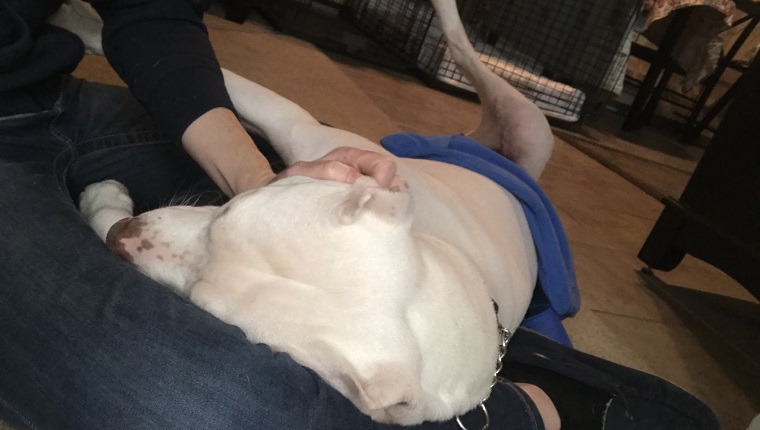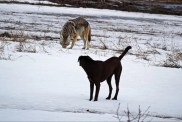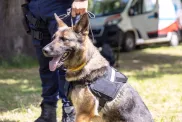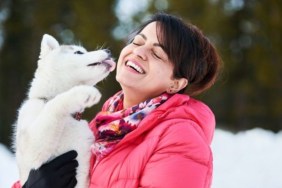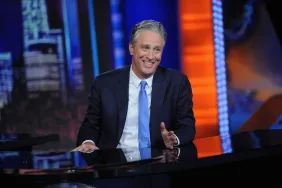You hear the dreaded words, “Your dog needs surgery.” And if you’re anything like me, you can barely keep it together long enough to get out of the exam room before the tears fall.
You hug your dog, and even though you’re not sure you believe it yourself, you tell him it will be okay. And it will be–because you will be prepared to confidently and appropriately manage the surgery and recovery process.
As dog moms, its our responsibility to make sure our pups’ needs are being met–even when we don’t think we can.
I have five dogs in my home, and I thought I knew enough. I’d been through spay and neuter surgery and recovery before, but nothing major.
But when Kain had his first surgery for a torn ACL, I wasn’t prepared. I wasn’t prepared for how hard it would be–not just physically, but mentally and emotionally.
His Pain Was My Pain
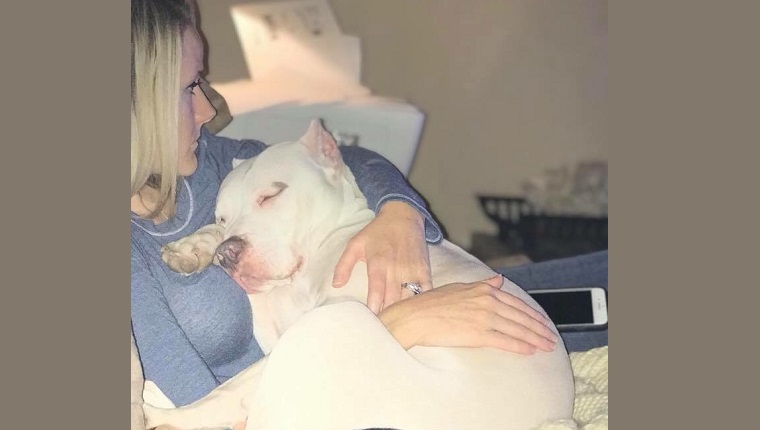
One night a few weeks after surgery, I found out just how hard it would be.
I was up late getting some work done, and by 1:30 am, I was tired and ready for bed. But I knew I needed to do Kain’s physical therapy.
It was the middle of winter, but I took him for a walk and then we did his exercises. He did well but I could tell he was sore, so I stayed up a little longer to put a heatpack on him.
He didn’t like the heatpack at first. I had to chase him around the room like a toddler who doesn’t want to eat his veggies until he got comfortable and let me put the pack on his incision, groin, and back.
He had a bit of muscle atrophy and a strained groin due to lack of use. The physical therapist said to massage him during this time to help loosen up the muscles and reduce pain.
So I sat on the floor with Kain. I massaged his little leg and back and abdomen as he lied there mostly peacefully, squirming around every once in a while just to get a look at everyone in the room.
And I just started crying.
For no real reason other than that I love him so much, it physically hurts.
He has been through so much in his short life but he continues to show nothing but love.
It hurts me to see him in pain. It hurts me to push him through the pain to make sure he does his exercises so he can get better. And it hurts me to hear his little whimper.
He is a dog who rarely shows pain, so when he does, I know it’s pretty awful. It hurts me because he doesn’t understand I’m doing this to help him. And it hurts me because I can’t imagine what his life would look like had my husband not found him and taken him in.
The Love That Grew
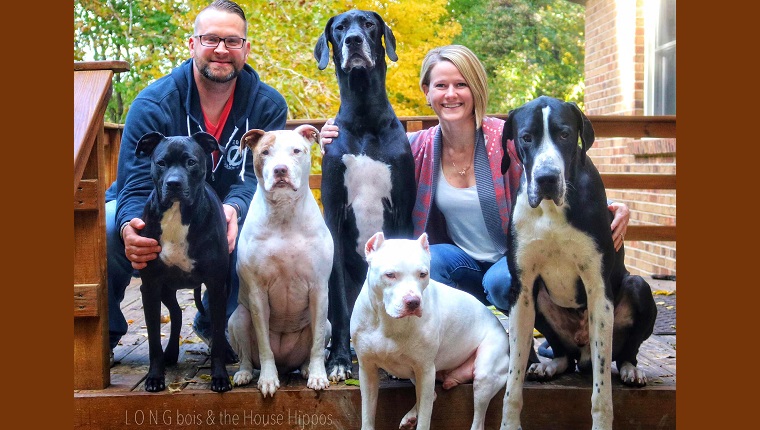
My husband, Jeffrey, found Kain behind his old apartment building. He was locked in a crate in the hot sun, covered in his own feces from head to toe, malnourished, but mostly just thirsty. Not just for water, but thirsty for affection–for love.
Unsure of what he was going to do with Kain, my husband decided to take him home and clean him up. After he had a meal in his tummy, he looked up at Jeffrey with those bright blue eyes, and the rest is history.
But, there was a time that Jeffrey considered rehoming Kain since he really had no intention of keeping him at first.
Kain is a wild, strong-willed little boy and is usually the one that gets the rest of the dogs going.
When we were first integrating the pack, we didn’t know how to handle it and got overwhelmed easily. We went so far as to contact a rescue, and they put his information up for potential adopters.
But when we started getting calls from people wanting to adopt him, we just couldn’t do it.
We decided that WE needed to be better.
Never Stop Growing And Learning
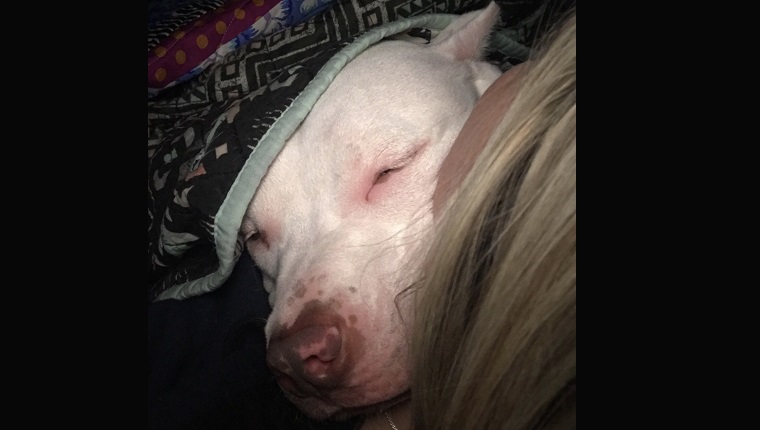
Dogs are a reflection of their owners just like kids are a reflection of their parents. And the same applies to any other aspect of our lives together. When we are better and do better, they are better and do better.
It’s my job to do the hard stuff. As much as I wanted to take Kain’s pain onto myself if it meant he could be healthy, I knew that wasn’t reality.
So I continued to do the best I could to help him get there. As we snuggled into bed around 3:15 am that night, Kain silently told me that he understood and he forgave me.
The beautiful thing about this boy–and every dog I’ve ever met–is he’ll continue to show that same forgiveness every day.
The best I or any dog mom can do is try to earn that forgiveness by being better–by learning.
So with that in mind, I invite you to learn a few things from my experience. My hope is that they might help you if you ever need to be there for your dog after surgery.
Consider it my unsolicited advice to you.
Manage Expectations
When your dog has surgery, manage your expectations.
Talk to your veterinarian about what a realistic timeline looks like for not only the surgery, but the recovery process. For Kain’s ACL recovery, it was a long twelve weeks.
Find out what exactly that entails. Does it mean crate rest for the whole twelve weeks? Does it mean light exercise, or just that they need to wear a cone for the whole time? Find out exactly what the recovery orders are and follow the guidelines.
Once you are comfortable with what you learn, ask yourself if you’re capable of accepting those terms and setting your dog up for success. Also, be sure to keep in mind that your dog may or may not progress exactly as the typical recovery process suggests. But, that’s okay.
Follow Vet Orders
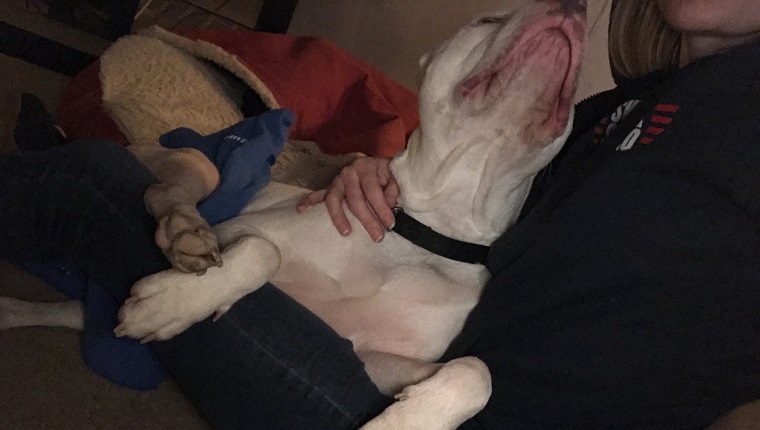
I think so often we, as dog parents, slack off a bit and don’t stick to the orders given to us by the vet.
The reality is that it’s not our dogs’ job to appreciate and stick to the boundaries. It’s our job to set the boundaries and then enforce them.
Of Kain’s twelve week recovery period, the first six weeks were supposed to be solid crate rest. He was allowed out for potty breaks and up to 15 minutes of walking around–ONLY ON A LEASH. So, for six weeks, it was up to us to make sure that we took him out on a leash and restricted his activity.
Kain doesn’t know how to do that. But we, as humans, get lazy. We think, “Oh, he’s healing great. He doesn’t need me to take him outside on a leash. I’m certain he will nicely go outside, go potty, and then come back in.”
But anything can happen while your dog is not leashed. All it takes is a squirrel running through the yard and your dog is off like a bolt of lightening.
Those six weeks especially, are so crucial to our dogs’ overall and long-term progress that we are doing a disservice if we do anything other than follow what the vet suggests we do.
Monitor the incision to be sure that it is healing properly and without infection. Keep the cone on as long as you’re told, so that you can avoid a possible infection setting in because your dog licked the incision site too much!
Do The At-home Exercises
If your vet gives you at home exercises–DO THEM. Anything that you can do to not only help speed up your dog’s healing, but to help them heal more completely, is really in your favor.
The more you do now, the better off your dog will be in the future. It’s heart wrenching to know your dog is in pain but that they need to do the exercises. Your dog will probably fight you on it and not want to do the exercises. You will get tired of it and will think that it’s fine to skip a night.
But, I promise, if you create a routine and then stick to it, everyone will eventually fall in line. And by everyone, I mean you and your pup.
The more days in a row that you complete the exercises, the easier it is to continue completing them each night. The first time you take a break, the harder it is to get back into the swing of things. As I’ve said before, it’s up to us to do the hard work. We must spend the time and effort necessary to make the healing process a priority.
Be Your Dog’s Voice
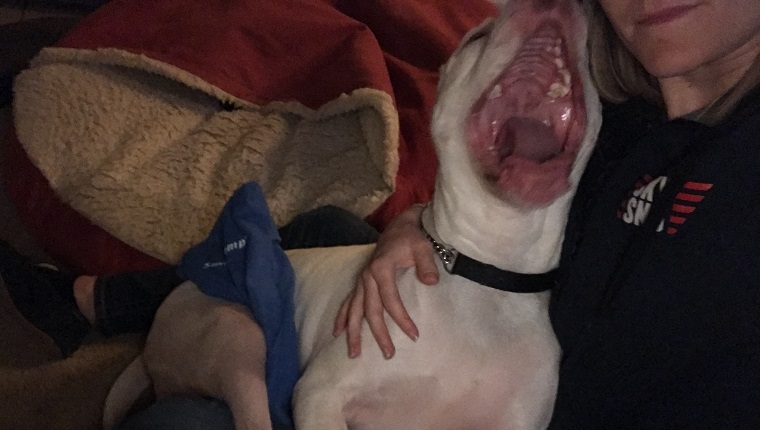
Be sure to pay attention to changes in behavior or mood, as well as the surgical site.
Dogs tell us how they are feeling, but a lot of times, we aren’t listening.
Get in tune with your dog so that you can determine how much is too much and when you need to change your course of action. If you’re at all concerned with your dog’s process or you just feel like something isn’t right, do not hesitate to reach out to your veterinary staff.
I always follow the “rather safe than sorry” mantra when it comes to my dogs. I know them better than anyone and it’s my responsibility to be their voice. As much as I wish they could tell me exactly what hurts and where, they just can’t.
So during recovery times, my sensitivity to their behavior and mood is heightened. Our end goal is all the same–to have a healthy, happy, and safe pup.
So, my unsolicited advice is to do the hard stuff. Do it today. And do it again tomorrow. Even when no one else is. Every time it’s necessary, do the hard stuff. The rewards are more than you can even imagine.
Katelyn Hoglund is a proud dog mom to five pups, and you can see what her fur family is up to on Facebook by following Dogs and Other Unsolicited Advice – L O N G bois and the House Hippos. You can also catch more of her dogs and her unsolicited advice at dogsandadvice.com and on YouTube at Dogs and Other Unsolicited Advice.
